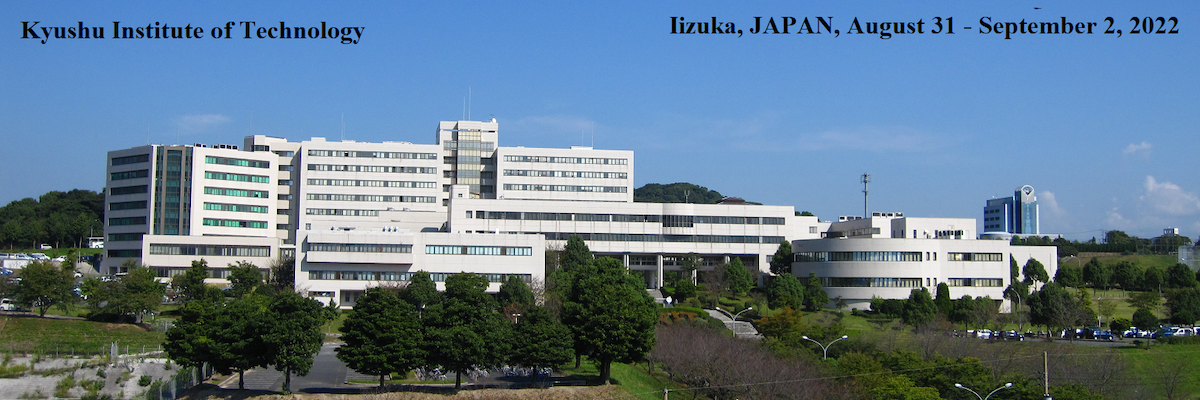Symposium1 Numerical Simulation and Visual Analytics of Nonlinear Problems
| Organizer | Soichiro Ikuno (Tokyo Univ. of Tech.) |
| Co-organizer | Satoshi Tanaka (Ritsumeikan Univ.), Koji Koyamada (Kyoto Univ.), Seiichi Koshizuka (Tokyo Univ.) |
| Objective | Both the numerical simulation and the visual analytics have played an important role in the analysis of nonlinear problems arising in a wide variety of fields in science and engineering. For example, in solid-state physics, fusion engineering, and fluid dynamics, a number of high-performance numerical techniques have been proposed for solving nonlinear partial differential equations and they have contributed to the remarkable development of these fields. Moreover, visual analytics of complicated/large-sized data is indispensable for the analysis of the results obtained in numerical simulations. In this sense, the numerical simulation and the visualization should work closely together in the analysis of nonlinear problems. The aim of this symposium is to provide a forum for exchanging ideas and discussing recent developments in the numerical simulation and the visual analytics of nonlinear problems. |
Symposium2: Advanced Concept and Methodology in Bioscience
| Organizer | Takahiro Kenmotsu (Doshisha Univ.) |
| Co-organizer | Susumu Fujiwara (Kyoto Inst. of Tech.), Hiroaki Nakamura (NIFS), Yoshihide Shibata (NIFS) |
| Objective | We focus on research of advanced concept and methodology in the field of bioscience including origin of life, numerical calculation including theoretical treatment, data analysis in medical field and so on. The aim of this symposium is to provide a forum for exchanging ideas and developing concept including numerical methodology. We expect that participants launch new concepts and collaborations in bioscience by fruitful discussion in this session. |
Symposium3: Advanced Numerical Analysis and Software in Multiphysics and Coupled Problems
| Organizer | Daisuke Ishihara (Kyushu Inst. of Tech.) |
| Co-Organizer | Amane Takei (Univ. of Miyazaki), Tomohiro Sawada (AIST), Hiroshi Kawai (Toyo Univ.),Tomonori Yamada (The Univ. of Tokyo) |
| Objectives | This symposium focuses on the advanced numerical analysis, the software development, and their applications in the scientific and engineering problems of multiphysics such as structure, fluid, electromagnetics, and heat, and their coupling. The topics of interest include, but not limited to: a. Coupled-Simulation and Co-Simulation The different subsystems form a coupled problem when the independent solution of any one subsystem is impossible without simultaneous solution of the others. The coupled-simulation and co-simulation are the computational approach to coupled problems. The objective of this symposium is to share the state-of-the-art coupled-simulation and co-simulation, where the topic includes the numerical modeling, algorithms, program and software development, and applications in coupled problems. b. Advanced Numerical Analysis and Software Technology Numerical simulation frameworks are widely used in industries as package-software those are sold by software venders. On the other hand, open-source software: OSS’s numerical simulation frameworks are also researched and developed energetically by research groups centered on Universities. For example, ADVENTURE developed by a research group centered on the University of Tokyo, and UG4 developed by Goethe University Frankfurt, Germany, are good examples. These source codes are released, and these are possible for a researcher to develop a simulator with new functions by adding the code required in his own research. The objective of this symposium is to discuss mathematics such as basic equations and linear algebraic solvers, parallelization techniques, the software development methodology: SDM. c. Computational Biomimetics It is expected from emulating nature's time-tested forms, functions, and strategies with understanding their underlying principles and mechanisms that we find sustainable solutions, which are engineering alternatives to nature’s solutions, and we solve practical problems. Since this biomimetic concept is multidisciplinary, computational approaches are essential because of their interdisciplinary nature. Hence, this symposium focuses on computational models, numerical algorithms and methods, and computer software and framework in biomimetics, and their applications. |
